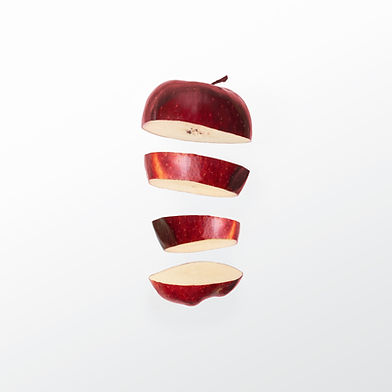Apple
Where to find?
Carrazeda de Ansiães, Alfândega da Fé, Valpaços
The apple is one of the most iconic fruits of Trás-os-Montes, with production that reflects the agricultural wealth of the region. Here is a detailed description:
Apple Species in Trás-os-Montes
Trás-os-Montes apples include traditional and modern varieties, such as:
Bravo de Esmolfe: Small, irregularly shaped, with aromatic and sweet pulp. It is a DOP (Protected Designation of Origin) variety and highly appreciated for its quality.
Reineta: With an acidic flavor and firm texture, ideal for desserts and jellies.
Golden Delicious: Popular for its sweetness and versatility, with a golden skin.
Gala: A modern variety, with red skin and a balanced flavor.
Seasons and Regions
The apple harvest in Trás-os-Montes takes place between August and October, depending on the variety. The main production areas include municipalities such as Carrazeda de Ansiães, Alfândega da Fé and Valpaços. These regions benefit from a Mediterranean climate with hot, dry summers, ideal for growing apple trees.
Use with Olive Oil
The combination of apple and olive oil, two emblematic products of the region, results in unique and creative dishes. Some suggestions include:
Salads: Fresh apple slices combined with olive oil, nuts and cheese create a light and sophisticated starter.
Desserts: Baked apples drizzled with olive oil and honey, a simple and delicious dessert.
Savory dishes: Caramelized apples with olive oil can be used as a side dish for meat, adding a sweet and sour touch.
Culinary Adventures with Alheira: From Tradition to Innovation
Alheira is an extremely versatile sausage in the kitchen, and can be enjoyed in many different ways. The most common way to eat it is fried or baked in the oven, accompanied by French fries, white rice and a fried egg 2. However, in the Trás-os-Montes region, it is traditionally boiled or grilled and served with boiled potatoes and seasonal vegetables, such as turnip greens or kale 1. It can also be enjoyed as a snack, served plain or accompanied by bread 2.
In addition to traditional preparations, Alheira lends itself to more creative and modern culinary uses 3.
Its soft filling and the ease with which the skin is removed make it an excellent ingredient for filling puff pastry or filo pastry.
It can also be used to stuff squid, offering a tasty alternative to the traditional rice and chorizo filling.
Alheira can also be used as a pizza topping, adding a regional Portuguese touch, in scrambled eggs for a hearty breakfast, or in sautéed pasta for an unexpected touch.
An example of a more innovative use is the "Alheira Tagliatelle" with leeks and mushrooms, inspired by Italian cuisine.
When using Alheira as the main ingredient, rather than as a filling, it is recommended that it be well fried in a pan to obtain a crispy texture 3.
Alheira's ability to adapt to different preparation methods and be incorporated into dishes ranging from traditional to innovative demonstrates its versatility and its appeal to a wide range of palates and culinary preferences. The evolution in the ways it is consumed, from the simplest and most traditional preparations of Trás-os-Montes to the most common and modern presentation, reflects its enduring popularity and the way it has adapted to contemporary tastes.

